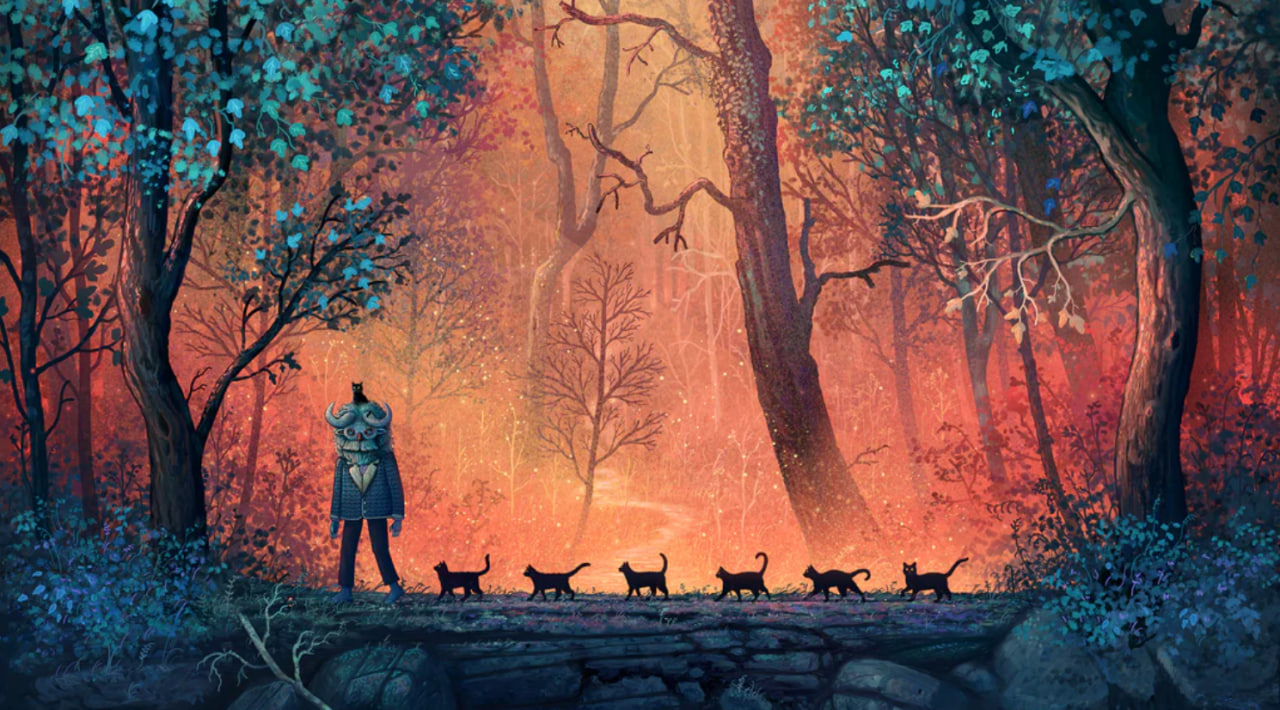
UnDeviled Forces: Witchcraft 2.0 (Maelinhon&Madyara)
Do you like nature? I love it very much. And every time I slightly puzzle over when someone says things like “nature woke up” or “nature will take revenge,” because nature has neither hands nor paws. It cannot do something to you, wake up, decide, etc. So, then, who can?…
A demon hit us and we want to understand the situation specifically in nature: today we will discuss athaelim dalram [ataelim dal’ram] – demons, imps, spirits of nature, forests, fields, rivers, and lakes… Our project has already dedicated a significant number of articles and even books to demons, but there’s only fragmented information about dalrams, and I find this to be somewhat not fair. Today, we will comprehensively delve into what kind of beings they are, their physical and elemental attributes, how one can work with and establish contact with them, and most importantly — we will outline a complete hierarchy of princes worldwide. Who rules over which territory and where they reside. Currently there is no such information in the world at all, so the process of data collection has taken an extensive amount of time.
Entities: gods, demons, and viscous mess
The very first thing you need to know is the fact that all these words like “devil,” “mermaid,” “god of love,” and so on — these are human labels and human understanding of the matter. The entities themselves don’t use such terminology and don’t associate it with themselves. All entities among humans are either gods (a status given by humans!), demons (a biological species), or “spirits of nature” (pretty much anyone). God and Demon are like King and Human, Leader and Dog, Pharmacist and Woman. We compare and juxtapose cold and lavender, but paradoxically, nothing bothers people. By this logic, a demon can also be a god if people give him such a status, right? With a pattern like that, it’s impossible to figure out who’s in front of you and who you’re working with at all. «Pharmacist» tells us nothing about a person, “god” tells us nothing about an entity.
Therefore, the first step in working with entities is to examine their essence, rather than how various tribes on the globe referred to them and what attributes they assigned to them.
Entities are distinguished not by what people call them, but by what they are made of – which elements are primary for these beings and which ones they work with. This is the species. A mermaid is an entity that has water as the main element for living, for example. And for leshy it will be the element of wood. Consequently, you can categorize any creature into a table — these are of the darkness, these are of the air, these are void-related, these are something from the soil of salt deserts… In other words, the species is determined by the element, not by the name or title. This is the first thing to be clearly understood.
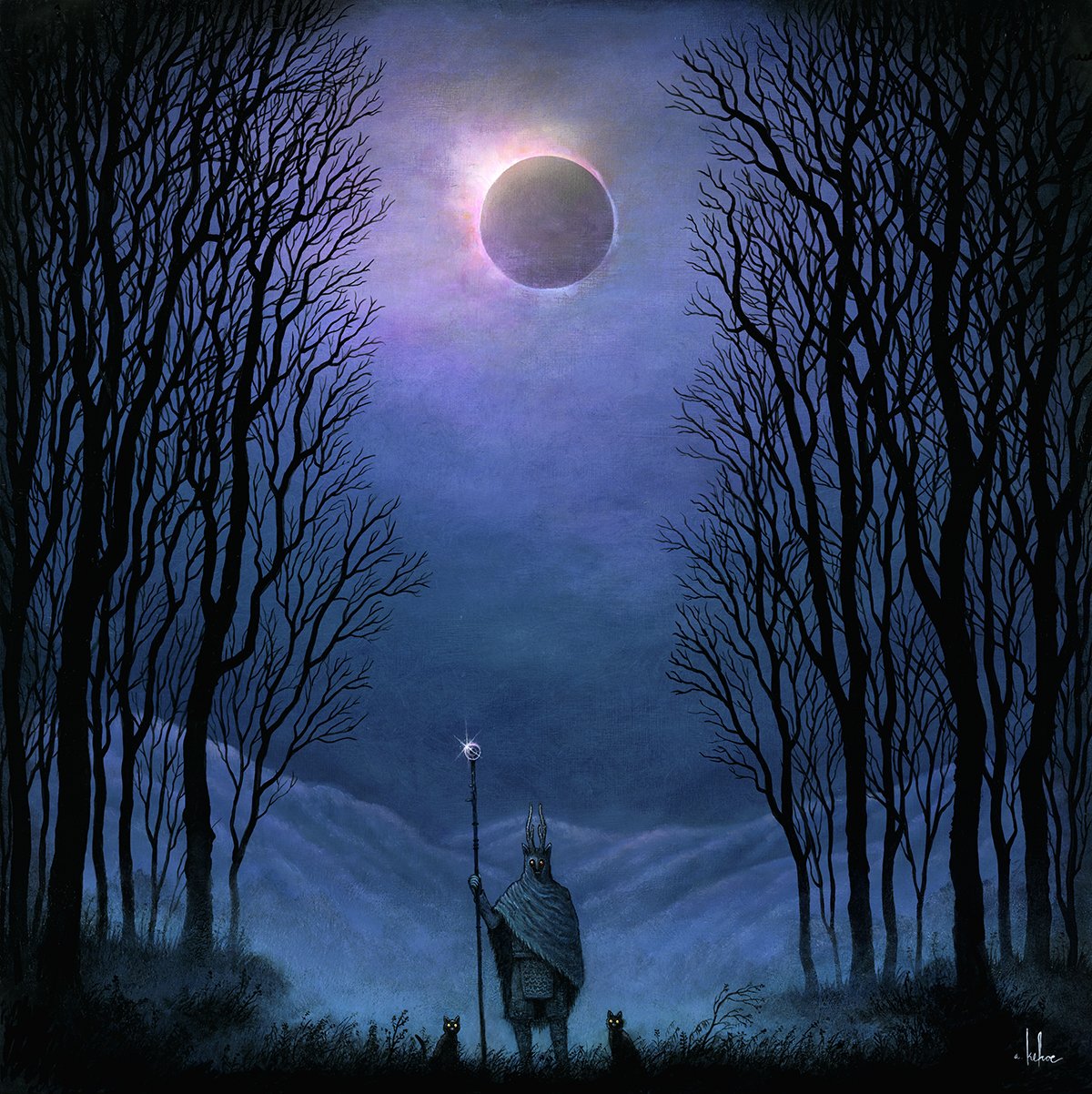
Our ash tree Yggdrasil has 4 types of worlds: upper, middle, lower, and elemental. There are about a dozen such trees around us, and someone also lives there. In fact, where humans currently live (the dense sector of the middle worlds), originally there were three major races: the lower infernals (imps, devils, nature spirits, etc.), void races (fairies, sirens) and all sorts of wood and water elementals, plenty of which are present in mythology — mermaids, leshies, water spirits, spirits of forests and fields, mountain spirits, and desert сhthonic beings. And, of course, the fauna — animals, birds, reptiles. All of them have lived together and made up a single ecosystem of the Middle Worlds, each engaged in their own affairs. To put it simply, all this variegated company, which will later enter mythologies and cosmogonies, is the primary, primordial population of the trunk of the Tree, people have appeared there very recently.
Later, the dictatorship of Yahweh occurred, and the situation changed drastically: the void races were completely exterminated or dispersed, and in the middle worlds, only dalrams and nature spirits remained, who started coexisting with humans. They continued to deal with their fir trees and fish in the sea, the only difference being that they began to closely tap into the numerous energy outbursts from humans. And to take humans into account in their affairs. They didn’t start interacting with humans; rather, they occupied niches of numerous gods and claimed control over the majority of human egregores. In other words, the egregors of power, gambling, money, religion and other hot domains, THERE’S ALWAYS a ruler – dalram.
However, one thing at a time.
Athaelim Dalram
When speaking of demons, jinn, imps, and spirits, people use either the Latin word “infernus” or the Greek word “daimon” and they all lump these three races together without distinguishing or understanding the differences. Inferns themselves, as a species, are called “Ataelim” in their native languages, stemming from the combination of Aramaic words meaning “higher, superior” and “dim, dark.” This category includes 2 distinct types — “Lelram” (higher demons) and “Dalram” (lower, in the sense of “less substantial, smaller”). The only thing they have in common is that they all have the element of Darkness and its combinations with others in their essence. Simply put, any fauna that live on Darkness and their offspring that live on the elements native to nature are dalram. This is their self-name for themselves, and if you call a mermaid or demon that way, it’s correct, though the word itself is more likely to refer specifically to the Darkness.
Dalrams is exactly that, the primordial population of the now dense, physical world, which has not gone anywhere from here and continues to live in the pockets of the subtle world reality, as close to the physical world as possible. This is the only species that managed to somewhat adapt to the densification of the world around them, survive within it, and rebuild their entire way of life to fit new realities. The first humans who began to deliberately describe and depict the world around them naturally portrayed dalrams as well. In all the mythologies, on all frescoes, in stories and fairy tales, everywhere we see this idea. That the world around us is full of spirits — horned, tailed, aquatic, resembling humans or animals, diverse and interesting. Starting from mythologies where every forest and every lake had the spirit of that object, and extending to the works of Hayao Miyazaki and even Lesya Ukrainka (believe me, “she who sits in the mountain” is not a fish inspector). And between them – myriads of pictures and stories with fauns, satyrs, spirits of kami in Japanese, spirits of deserts and mountains, noonwraiths, djinnis, mermaids, and who knows what else. There are so many of them, and they mutate so frequently that compiling a classification can be quite challenging.
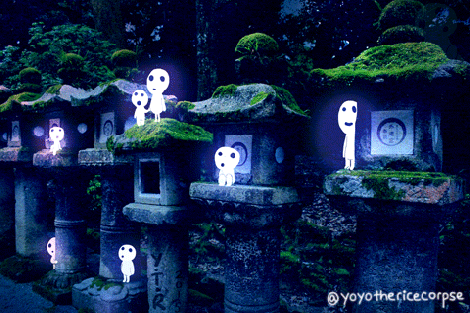
A separate problem is that many dalrams were honored by people as separate gods (Cernunnos, for example), and now it is difficult to understand who and where was meant in mythology. People generally called gods anyone who knocked on their door — both imps and planetary spirits (Agni, Stribog, Vishnu), weavers (Ymir, Tengri, Tiamat), and Ma (Mara, Lakshmi), and demons (Ishtar, Hecate) and natural spirits… There is no way out of this mess. Try not to delve too deeply into it, because it can get even more confusing. Moreover, be cautious of monotheistic mythology in which EVERYONE who doesn’t belong to their hierarchy they call “demons”, and ascribe obsessively malevolent properties to all of them. It’s nonsense.
Broadly speaking, it can be said that dalrams are categorized into types and hierarchies based on the size of their bodies (surprisingly). They are sort of stretched across biology and meaning from animals to amadakhs. The larger the entity, the more developed it is, possessing speech, abstract thinking, knowledge of languages, and so on. The smaller the dalram, the closer it is to the animal or plant world. In other words, the princes of imps are just as developed and wise as demons, while the tiniest imps, in essence, are closer to cats or octopuses than to anthropomorphic beings. The smallest ones communicate with sounds and thought forms, possessing intellect at the level of a very intelligent crow, and they occupy their part of the forest or field.
The second thing to know is that dalrams don’t distinguish between their life and their activities; for them, it’s essentially one and the same concept. In other words, for them, the process of existence, sustenance, and work are one and the same. The foundation of their existence is the purification of space from dirt, decay, negative energies (Sha Qi), and the stimulation of nature and living beings for renewal and the birth of offspring. They endlessly move through space, cleansing the world and adjusting natural processes on all levels. The more organized and coordinated the work of the imps in an area, the cleaner and healthier the ecosystem and life in that region.
Depending on which elements prevail in an imp’s body, they will work with different types of energies and elements, in simpler terms, consume what they lack. They all are very fond of dirt, just of different kinds, depending on which element is nourishing for them and what they filter. Desert imps live on the elements of fire and earth and filter the world in arid regions, while woodland and water imps live in forests and parks, and so on, within the framework of common and understandable logic 🙂
There’s a separate kind of urban imps; most often, they live in parks and temples, but in general, they can live anywhere. If your cat is attentively watching an empty wall and meowing at someone there, it’s likely that a dalram has wandered in, and the cat can see it. They often visit animal shelters, veterinary clinics, and similar places to help sick animals or to ease the suffering of those that are terminally ill.
The appearance of dalrams
There are a large number of dalram tribes (more than 70), and they differ significantly in appearance and elemental composition. Forest and steppe dalrams, conventionally northern imps are fluffy, stocky, with large horns and easily distinguishable faces with big eyes. Their faces resemble human faces but have slightly different proportions, especially the eyes. Northern dalrams may have fur growing on their foreheads and under their cheekbones, but their heads have regular hair.Those found on coastlines and in deserts in the Middle East are thin, tall, with brown or red-black skin, entirely hairless on their heads and bodies. They have yellow and red, luminescent eyes and slender tails. These are the ones that most closely resemble the imps that are commonly depicted by ordinary people, as the typical imp in the CIS (Commonwealth of Independent States) is more attractive and doesn’t evoke negative associations. Eastern dalrams may look slightly frightening due to unfamiliar features, but in essence, they are not very different from the others. European-like dalrams tend to be taller, with delicate features and very large eyes, resembling anime characters. These encompass all the variations of satyrs, fauns, mermaids, and others that you may have seen in paintings and fairy tales.
All dalrams have four limbs with three or four fingers, a head, a torso, and distinctive features such as unusual skin colors (which can be brown, red, bright white, flesh-toned, or even green), tails, and horns. Speaking of horns, they are never in pairs as depicted in the stereotypical image. Usually, there are two or three large horns, and on the forehead or under the hair, there are additional 3-5 small horn-like protrusions, resembling bumps on the head of a young goat.
If we’re talking about larger dalrams, they typically have legs ending in something like modified hooves with several segmented fingers. They wear clothing, adornments, and have a fairly understandable human-like lifestyle. Many of them can comfortably read literature and go to the movies 🙂 Smaller species live directly in nature, moving on both two and four limbs. They have various “abnormalities” in the form of 3-6 arms or legs, extra eyes, wings, scales and other exotic features borrowed from the animals and plants they coexisted with. Small and common dalrams are usually between 30 cm to a little over a meter tall. Princes are significantly taller but generally shorter than humans; the height of princes of imps ranges from 120 to 150 centimeters. Prince Yenarei, who is about 165 centimeters, is considered a true giant for their species.
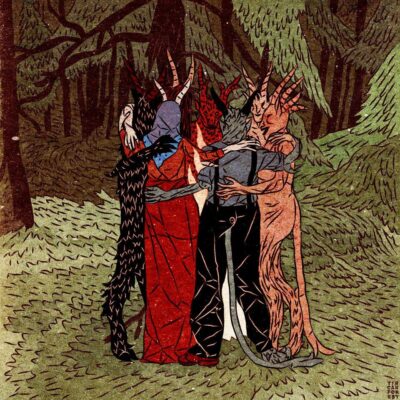
In other words, there is no unified standard for their appearance. However, dalrams tend to immerse themselves in the surrounding cultures and languages. Those who wear clothing can dress like local people and lead similar lifestyles. They also have households, children, and so on. Their spoken language is Aramaic, like that of demons, but they typically know all the local human languages and even more.
Japanese and Chinese princes are stocky, very strong, with disproportionately large heads. Check: Yubaba and Zeniba in “Spirited Away,” typical rulers in Asia. In this animated film, there are moments where Chihiro runs through a bathhouse, and in the baths, there are some chicken-like creatures with eyes, horned logs with eyes, and a living radish with two legs. And notice that the bathhouse is ruled by a more anthropomorphic female demon and her assistant Kamaji – with four arms and hooves. This is a comprehensive illustration of the diversity of dalram species in the region. Honestly, Hayao didn’t make anything up; it’s all described in mythology and visible to anyone with sight. And the faceless Kaonashi, wolves with 2+ tails, small tree spirits from “Princess Mononoke,” and the ruler of the forest from there as well. In Asia, on the islands and archipelagos, including the Kuril Islands and nearby areas, there is also a type of very small dalrams, like a small old man, but it’s best not to upset the old man 🙂
There is also a separate type of church demons that live and work only in religious buildings (any) and on their channels. They receive prayers, provide assistance, give out head-butts and so on. The essence of this phenomenon is that dalrams are the closest race to humans in terms of density, so they are the only ones who have a direct influence on the human world. Entities living beyond the density boundary have very poor vision and perception of dense worlds and even less influence on them. In simpler terms, no demon or deity can help you directly; it can send you energies or some kind of impulse, but it can’t sit down and deal with your request, give you money, or punish someone – they can’t even see you properly. That’s why most requests from people to higher beings somehow go through dalram, following the principle of “John, there’s someone praying about something, go check it out.” You appealed to the conditional Thor, got help, everyone is happy, but in fact, the work is done by dalrams again.
The third fact (unpleasant): no matter who you turn to for help, whether it’s the Christian saints or Hecate, you’ll still be serviced by the imps 🙂 Because even if Hecate wants to help you, she won’t be able to due to the differences in density and poor access. She sends energy to the dalrams, and they fulfill the request. You can go directly to the imps — it will be easier, faster, and more convenient. Sometimes this symbiosis begins to lean towards parasitism, especially in monotheistic religions and in places where dalrams have less control.
All this motley company has a very peculiar management system. The small imps form groups that patrol a small sector of land, such as a kilometer by kilometer zone of forest. They supply plants with energy, monitor the movement of water, renew the tissues of space, etc. A dozen of such zones have a larger manager, a dozen large zones have another, even larger manager. And for the entire large territory, there is one prince-ruler, whom you can find in the dark magic lists. At the end of this article, there will be a complete list of princes from around the world.
It’s important to understand that territorial boundaries are a VERY conditional thing, and they don’t work like with humans, where there are borders you can’t cross, checks, and so on. No. These are approximate divisions of authority, which means that all local nature spirits can go to any prince or ruler who is nearby. They go to whoever is closer, they just have an immediate “area supervisor.” Borders usually follow natural zones and their outlines – the edges of steppes, major rivers, mountains, and the boundaries of natural zones are most often the boundaries of territories. The smaller ones rarely stray far from their territory, but the princes can travel and meet anywhere. You can see a prince from Kiev in New York or an Australian prince in the forests of the Urals – it’s a normal phenomenon. So you can only summon a small imps on the territory where you are physically present, but the larger ones can come as guests anywhere.
All princes are equal to each other. Each prince has about 5-10 major helpers on the ground, and they are responsible for managing the local forests and other things. This is how the hierarchy is structured, but at the top level, it’s the entire Council at once, without a head. In general, vertical hierarchies exist only among humans; in the subtle world, there is no such phenomenon. There is always a horizontal hierarchy, meaning there’s no one chief, but rather a dozen or so chiefs and their union.
By the way, the same system exists among the lelram (demons), but there are 6 rulers there – Ayaleth, Samael, Amaymon, Marreb, Cordet, and Zimimar. Below them are their subordinates.
It’s worth noting that among the inferns of all kinds, there is equality, but among the demons, it leans strongly towards matriarchy, with women often being the rulers. Among the dalram, it’s about fifty-fifty, meaning that some territories are ruled by patriarchs, while others are ruled by matriarchs, and they have equal rights. Among the fairies, by the way, there has always been a pure and very strict matriarchy.
Historically, both types of ataelim are closely connected, sharing common elements, a lot of shared history, and culture, and they have always had warm relations with each other. So, if you befriend the dalram, they can introduce you to “inaccessible” demons that are mostly unknown to the majority of people. Another point to note is that in horror movies we often see either imps portrayed in the monotheistic sense or restless spirits, but we rarely see demons (ataelim lelram). Filmmakers and human culture, in general, have had very limited encounters with them and often confuse these two types.
Stereotypes about imps
1.There is a very stable stereotype about possession, saying that imps sit inside, harm people and in general are negative characters. Imps are not worms or parasites, they do not sit inside the body, and they do not control the body. This type indeed tends to act very cruelly with people who have offended them or their possessions in some way, but it looks different. They sit on a person’s neck and begin to quietly drive them crazy, probing their weaknesses and flaws, inflating phobias and triggers, and feeding on the energy emitted from fear or euphoria. They do this to those who have been rude, commanding, harmed nature, littered, or came with ideas like ‘help me conquer the world,’ and so on. So, I have many questions about the Hollywood-style exorcism. The person has shat on everyone, he was given for it on the head, but at the same time they try to persecute the victim of the atrocity and it is considered evil. P – Logic.
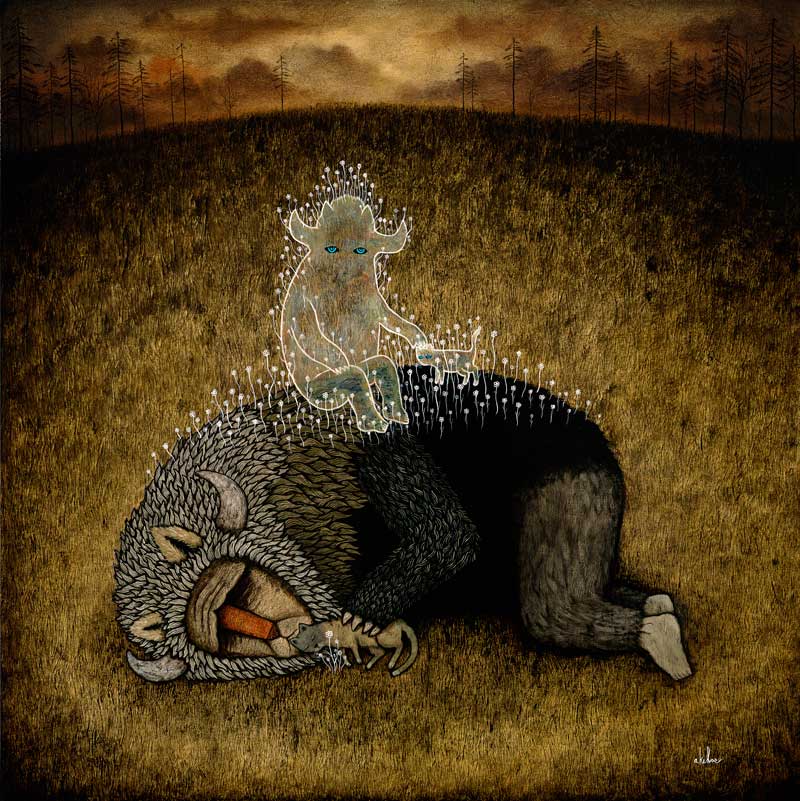
Imps do not hold a particularly favorable opinion of humans, but in general, their attitude towards humans is more neutral and indifferent. They do not actively seek out interactions with humans, do not interfere in their affairs, and have no particular interest in them. It is possible to collaborate with them, be friends, or work together, but you would need to deliberately establish such a contact. Returning to Miyazaki, the inhabitants of the valley did not warmly welcome Chihiro, but at the same time, they did not actively intrude into her life or take any hostile actions against her. Some of them empathized with her and tried to help her.
Behave normally, don’t crap on nature, respect all its powers – and no one will bother you, I promise.
2.Stereotypes about some ancestral imps, contracts with them, selling one’s soul and other heresy. Your soul is worth about nothing, because it is not in short supply and cannot be used in any way. There are a lot of snags in the forest, there are a lot of people living in the world. From the dalram perspective, these are roughly equal phenomena. They do not make contracts, sign them with blood, and certainly are not servants to anyone. Dalrams are subordinate only to the prince, no one else has the right to order them, I want to emphasize this separately.
But. There are personal alliances, when a certain imp befriends and works with a person, helps him in something, etc. He is not a helper, not a servant, not a slave, he is a friend and a colleague. Maybe for some people he is a lover, it happens too. If a person dies, a friend will get sad and then go to the forest, he is not a thing, he cannot be inherited. Also princes and the second circle after them have the right to issue their seals, which have legal force on the subtle plane and can be a document and protection. However, to achieve this, one would need to put in significant effort and propose something of interest to them in terms of work.
3.”Imps are required to live at road intersections” – this is a myth. They can live anywhere, including inside houses. If a demon lived in a forested area and the forest was cleared to build a house, they will not leave on principle and will continue to reside in and around the house. This type of dalram is referred to as brownie (household spirit).
4.Traditional witchcraft is very fond of attributing certain properties to everyone. Said, this one is responsible for love, that one – money, this one sends diseases and other bullshit. Imps (and other entities) are engaged in nature and the flow of energies in it, nothing more. They do not have any spheres of interest in relation to people, and moreover they do not get involved in people’s problems. Yes, they hypothetically CAN help you with this or that, but this is not their main activity. They are only interested in love when it comes to crucian carps.
5.And finally the myth that the dalrams are terribly afraid of religious symbols, prayers, etc. This is a pure myth, because dalrams “hold” 80 percent of churches and their stuffing, they don’t care about water and crossed sticks, and they don’t care about your verses either. I specifically interviewed several dalrams about this, they say that their bodies work on very low energy frequencies and all these things are at most unpleasant to them. Unpleasant – somewhere on the level of a loud noise or a too hot bath. It’s annoying, yes, but it’s not threatening or anything. BUT, they can play along with people’s delusional myths about it all, again to achieve some of their goals.
Rules for working with dalram
— You communicate with dalrams the same way you would with people. Correctly, politely, but without guarantees or consulting the book. You come with an idea, a request, something else, something small – bring a treat or a gift, make a request and hope for a response. You may not get an answer, they may refuse, you may not interest them – that’s okay.
— Be polite and respect personal boundaries: do not rush into a conversation, do not call insistently, but send a “message” and wait patiently for a response. In conversation – keep your distance, do not fall into subservience, do not flatter, do not be rude, do not order, speak calmly and kindly. If you violate any of these – you are in trouble.
— Under no circumstances should you lie!!! It’s strange, but many come to Dallrams with one thing in mind and say something else.They see it all perfectly well, feel the fear and the true motivation.If anything you say or think doesn’t align — you are in big trouble. If you want money, ask for money, no other way.
— Imps of all types have one bright feature – they instantly catch the emotional impression of the one who came. And they catch it unconsciously, they get a message from you, if you started moving in their direction. That is why it is silly to go to intersections — they already know you’re planning to approach about a minute after you’ve made the decision. When you arrive, they already know what you’re coming with and why. They can read minds, and they do not do it in a controlled way, they just download the information in their heads. So any stones behind your back = you’re in trouble.
— It is very important to realize that dalrams are living, thinking beings. They have a personality, memory, they have emotions, they can love, they can be hurt, they have a family. You can’t treat them like a tool for work, use them and throw them away. If you think that way — then you are in trouble for sure 🙂
— There are no problems if you come with a sincere heart and respect, and correctly ask for help with a fair compensation. All the stories of the format “Jerry was doing something with demons, and then he moved to a loony bin – so demons are evil” are about violation of boundaries, rudeness and so on. They also do not want to work with all sorts of insane people, do not like rudeness, can protect their territory and children, etc..
— Do not approach the higher princes with any nonsense. Princes will not deal with your personal and love affairs, give you money and so on. They are officials, and they deal with ‘projects,’ no less. Whether you want to establish a sanctuary to save animals, have come up with a new way to recycle waste, or seek to popularize your music in exchange for a percentage of energy profit – that’s what they are interested in. They will consider something significant. Archaic, for example, cooperates with dalrams as an information project that brings correct information from the other side, here’s an example of a project with mutual benefit.
— To gather some funds, to punish someone, or to seek assistance with work – the local small entities will help with any of these; they can be found in every pond and park – plenty of them around. There’s no need to bother the princes for such matters. With the smaller ones, you can be a bit firmer, but remain respectful and calm, providing a small upfront payment. If you want a new job, pay with one orange, and after they help you, bring them the promised cake. Ask them what groceries they want or offer what you have. Don’t bring leftovers, don’t bring things you wouldn’t eat or smoke yourself. Don’t offer food and cigarettes to someone more significant; you can offer them good alcohol, strong coffee, or something unusual. Maybe you have a liter of bull’s blood or alligator fillet lying around, something exotic in general. The small ones love cigarettes and fresh meat, while the princes can be treated the way you would treat a distinguished guest among people. Offerings to dalrams should be left outside on a window outside or in nature; you cannot consume the food afterward, unlike offerings to the grahas, for example. Dalrams don’t eat the food itself; they somehow consume its ‘vitality,’ positive energy. So, such food is not safe after they’ve interacted with it, and it could potentially harm someone if consumed.
— Remember, you have no leverage over dalrams except their own self-interest. They are always on their own mind and act solely in their own interests. They may include you in their plans if you are of interest to them or if you seek help in a critical situation. In other words, they do not approach people on their own, do not interfere in their affairs, and are generally indifferent if you’re drowning in a river or lost in the woods. However, if you REQUEST to be taken out of the woods or saved, they will most likely help you; an element of asking is needed.
— Do not perform rituals, especially from books. They are utterly unnecessary for imps and other forces. There are offers and requests; if you want to treat them or communicate, do so by talking, leaving gifts – no need for anything extra. Dalrams in the woods are like curious animals; they will come to you on their own if you just call them.
— The universal currency for any dalrams is cleaning up the territory. Those who are not sociable – you can collect a number of bags of garbage in the forest or park, take it all out, and then turn around and say – Guys, who can hear me, for this act I want my boss to get a dick on his forehead (or optionally, what you want there).
Demonography
Devils-Rulers of the territories
Geography becomes doubly intriguing when it’s of the occult kind 🙂 We collected this data over a long period because we wanted to correlate it with mythology and update the lists of territory rulers. Territory rulers change infrequently; the last time was in the spring of 2022 when there was a global council of princes, and about a dozen individuals were replaced. The choice of territory is voluntary; they simply indicate how much they are willing to take under their wing.

Prince Enarei is one of the largest world territory rulers, his territories stretch from the Ob River to the Lena River, encompassing the Ural, Yugra, Altai, all of Siberia with an extension into Yakutia and Mongolia. He appears as a sturdy, broad-shouldered young man with dark curly hair and reddish-honey-colored eyes (similar to a cat or owl). Small horns adorn his hair, and his forehead and partially his hands are covered in dark fur. He is a very kind-hearted and pleasant ruler dealing with extremely complex and challenging territories. As there is a lot of deforestation going on there right now and giant problems with garbage and plastic. He is a great friend of the Archaic Heart project 🙂
Prince Veligor governs the European part of Russia, the eastern part of Ukraine, Moscow, and its surrounding regions. Some believe that the typical ‘Slavic’ devil was inspired by him 🙂 He is tall, broad-shouldered, with black hair and twisted horns, and his nose resembles a button. He has enormous black eyes, a beard, and large, hairy hands with claws. Veligor is old and very wealthy, and it’s quite challenging to reach him. He has several sons, who most often come instead of him and may use his name.
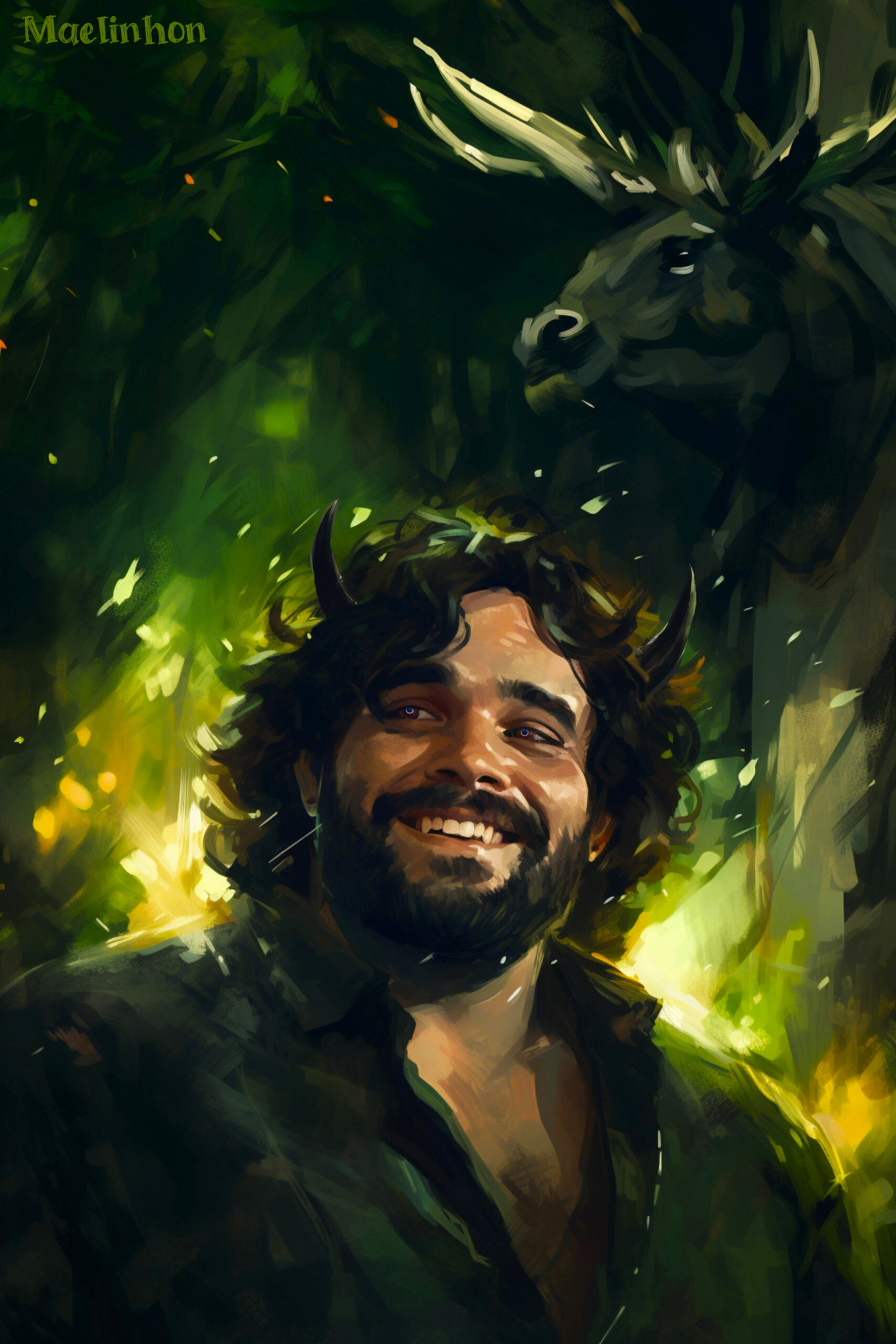
Prince Inoda – Central, northern and southern Ukraine (approximately to the edge of Zhitomir region), Belarus, Kiev and region. A young looking prince, looks like a plump curly-haired man, very large and physically strong, with a beard and small horns. Mainly deals with forests and steppes, quite sociable and open, likes to visit all sorts of fairs and concerts, gladly plays along with neo-pagans and other covens.
Princess Enaha – Western Ukraine, Carpathians, Romania, Hungary, south of Poland, Slovakia. Small mountain female devil, eye-catching and very beautiful, of “European” breed. Long dark hair, large emerald eyes, gilded little horns. Likes to appear in gorgeous embroidered dresses, jewels and furs. Works mostly with animals and those who work with animals.
Prince Vestor – Germany, Austria with a reach into Switzerland. A fairly young prince, a tall man with dark hair and white skin, at first glance not looking much like a devil at all. Perhaps he is encrypting himself in this way. On closer inspection – the owner of disproportionately large black eyes and hands with 4 fingers and claws. He likes to dress fancifully, in Victorian fashion, so to speak, and to wrap himself in long, loose mantles.
Prince Artan reigns over Switzerland, the Alps, Belgium, the Netherlands, and Luxembourg. One of the most interesting devils in Europe, because he is the owner of the gambling egregore. Thanks to his influence, it’s impossible to predict any lotteries or bets through cards or any other means. One can do it only through a personal arrangement with him, and motivating him for a jackpot is particularly challenging. He resembles a stereotypical cherub — with very light, golden curly hair, enormous and bottomless blue-green eyes, fluffy eyelashes, a golden thick fluff on his face and hands. Little horns. It’s almost impossible to get an audience with him. He lives in the Alps but frequently visits cities.
Prince Uka rules over Finland, Karelia, a part of Russia where Arkhangelsk and Petrozavodsk are located, the Barents Sea, and the islands in that area. He appears as a typical leshy — hairy, large, with several pairs of eyes and fluffy ears. Androgynous, its gender is unknown. Uka is responsible for the forests and territories where the forest meets the sea. It has been honored in Karelian-Finnish mythology since time immemorial and has not gone anywhere since then.
Princess Ibrigin and her children rule over the entirety of the Baltic region. She is a tall, very large female devil with completely white hair, large gray eyes, and reddish skin. She has four sons who locally govern the territories of Latvia, Lithuania, parts of northern Belarus, Estonia, with an extension into Karelia and nearby areas. She is an elemental of water and darkness.
Sweden, Norway, Greenland, Iceland, and the surrounding islands are ruled by Prince Bayva in the European part, and the icy regions are governed by Prince Isikhal; they are brothers. These unusual devils are furry and white creatures with horns, long legs, fluffy faces, and blue eyes. They live in the tundra and enjoy participating in various human holidays and rituals. They have a deep love for music.
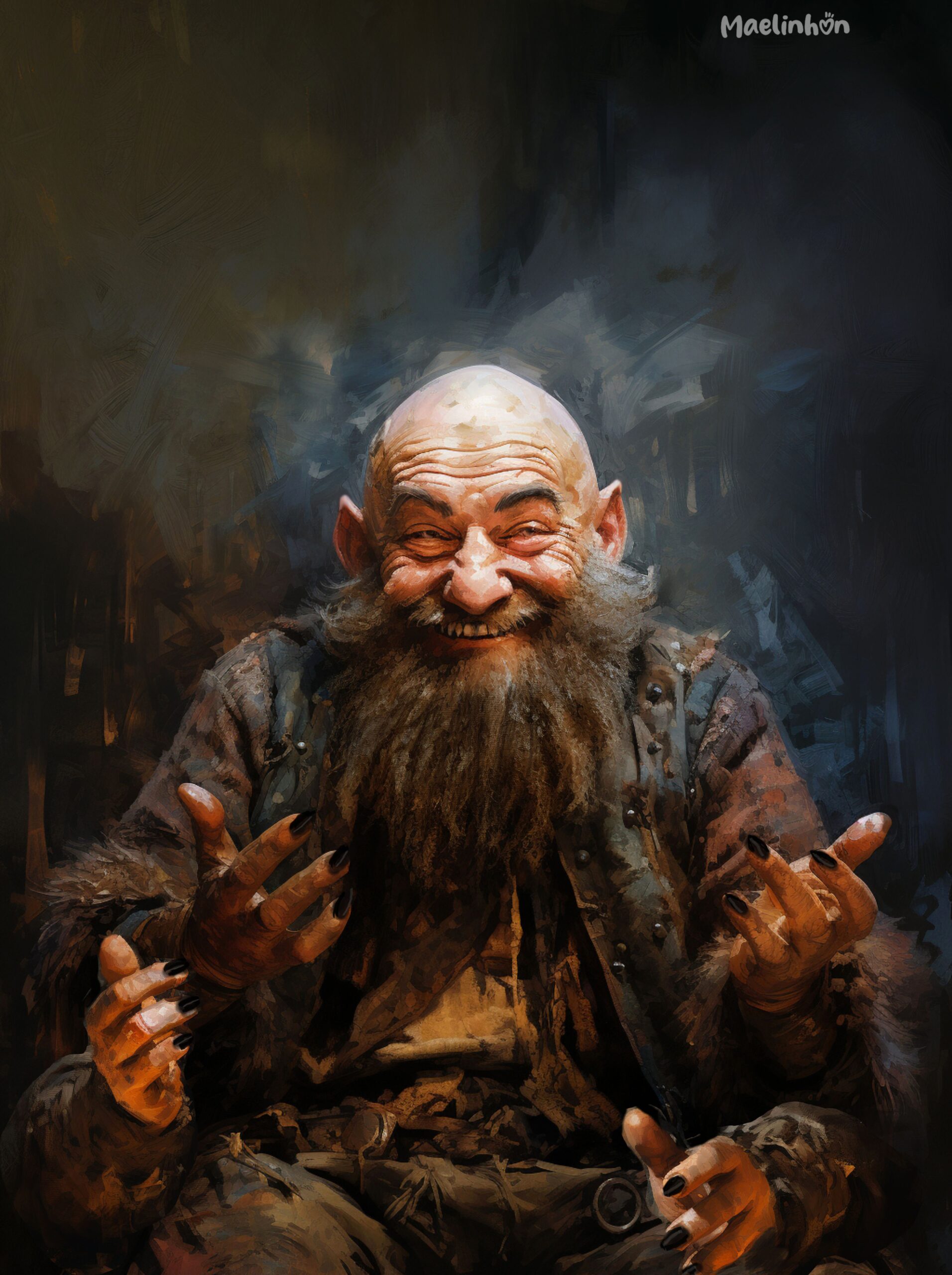
Prince Daol (in the books he is Morozei) rules over Canada, Alaska, Kamchatka, and the Far East of Russia. He is the patron of a vast territory, mainly cold and forested regions, including tundras. Daol originally migrated from Asia, so he looks quite different from the local demons; he resembles more of a Kamazi. He was once revered by the Ainu people as one of their central deities. He appears as a stout, mature man with a large head, two pairs of arms, and big black eyes, adorned with a beard. He has a large family with many children, which is how he extends his influence over such vast areas. He is calm, good-natured, and personally deals with all kinds of deer and mountain rivers himself 🙂
Prince Machin – United States. One of the Native American gods, the desert void dalram, lives in the Mojave Desert. Turns into a huge black eagle and is generally more often seen as a large bird.
Prince Sahia – Balkans. He is a gaunt old forest-dweller with a beard, likes loose tunics and capes in the Greek manner. He is fond of music and all kinds of people’s festivals, often providing inspiration to local composers.
Prince Seneon – Eastern France, Italy, Greece, Croatia, and surrounding areas. A relatively young prince, he resembles a typical curly-haired satyr from Italian paintings – cheerful, green-eyed, with a beard. Very charming and looks significantly younger than his age – he even has grandchildren 🙂
Prince Irhuti – Georgia, the Caucasus in general. A small-sized devil likes to wear large headgear, all sorts of hats and white clothes. Appears from the mountain fog. He has a rather cool temper and is not very sociable.
Prince Nitsor (Nitsior) – Armenia, Turkey, Azerbaijan. Brother of a Caucasian prince, they are similar in appearance. Also quite an unsociable person.
Prince Imrungol – Mongolia and Buryatia, Tuva, partially Yakutia. Imrungol and his family are not quite devils; they are air spirits, which are quite rare in the world. He can look like anything, but most often he takes the form of a sturdy and stocky Mongolian man with long thin mustaches, dressed in traditional clothing and footwear. He is encountered and summoned only in the steppes and the mentioned territories.
Prince Astelbar – Northern Spain, Portugal, Wales. The youngest prince on the list, he assumed his position in 2022. A young and handsome lad with dark hair and disproportionately large green eyes. Long ears, 5 horns, a slender and not very tall European forest spirit.
Partially his father rules – the old Prince Magor. He is visually interesting in that he has 4 hands and green hair 🙂
Princess Valhu – Scotland, Ireland, northwest France. Not quite a female devil either, more of a mixture of dalram and fairy, the essence is airy and most likely partly void. Appears as a disproportionately delicate and white-skinned girl with bright green or lilac hair, big-eyed and very beautiful. No horns or other tuning. She does not so much control forests as plants and flowers in general
Prince Miroh – Spain (except the north), Algeria, Morocco, Tunisia, Libya. An elderly satyr 🙂
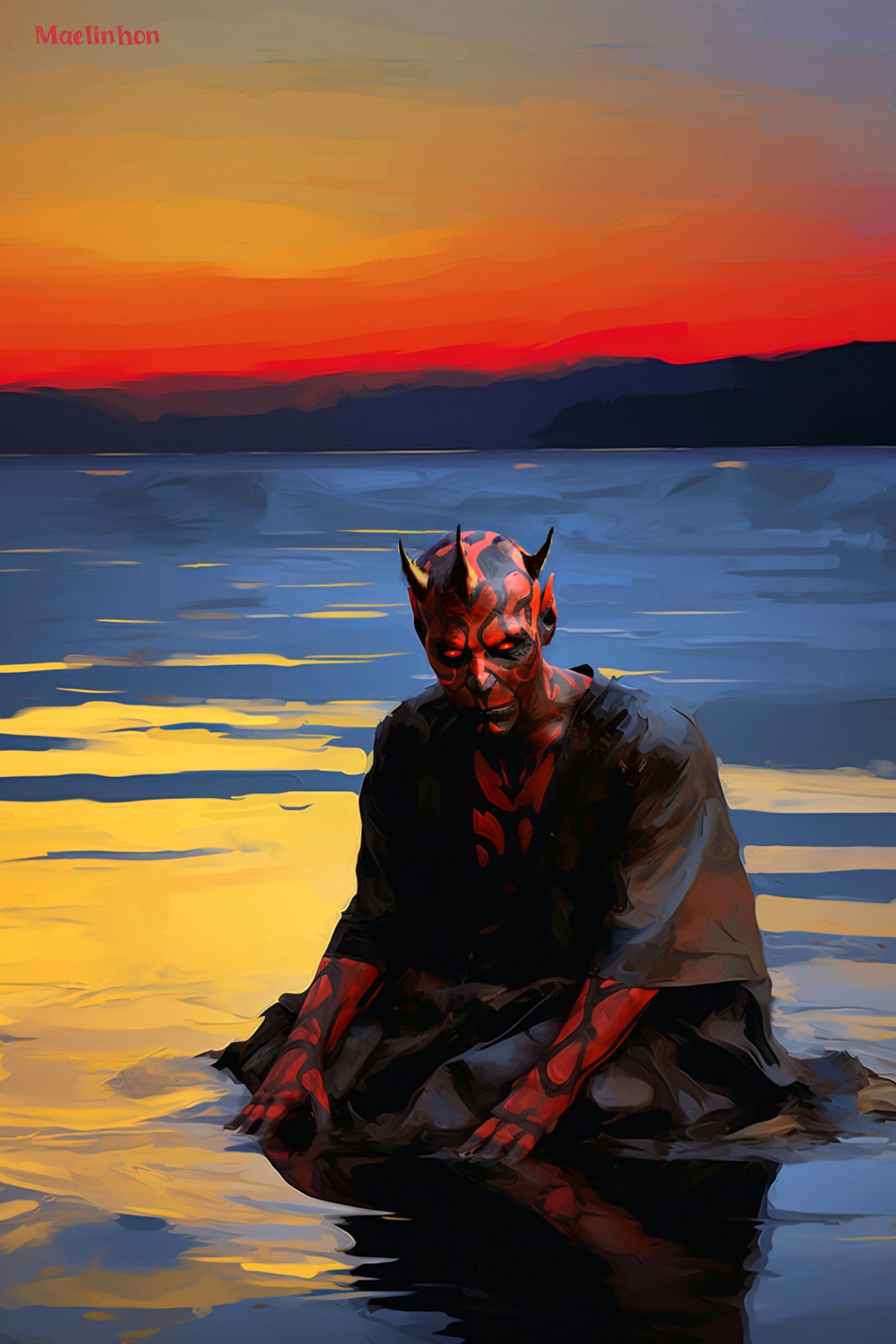
Prince Bogod (or Bogol) and his family – he has 7 children – Kazakhstan, Iran, Uzbekistan, Tajikistan, Turkmenistan, Caspian Sea. Very interesting ruler, the feeling that Darth Maul from Star Wars drew if not from him, then from his kind – exactly. The devils of these territories are tall, completely hairless, with black-red and black-brown hot skin that often has innate patterns and lines. Have a mixture of fire and darkness in their matrix, and adore extremely high temperatures, sands and red-hot rocks. To humans, their appearance may seem intimidating, but they have no distinction from other dimuts of their species. Bogod is characterized by a calm disposition, once supporting science, Persian poetry, and generally the arts of the “Eastern Renaissance” in the east. But at the moment there is mental decay and darkness on the part of the humans in those territories, so these dalrams have little contact with humans.
Prince Shektur – Israel, Palestine. Belongs to the same species as Bogod, loves white clothes and dwells in the city of Jerusalem 🙂
Princess Vaimune – Japan, Hokkaido, Yellow Sea islands and around, Korea, Sakhalin. Historically, in those parts, there was and still exists a division of territories according to the feudal type among small rulers. Vaimune periodically delegates her responsibilities to governors on the islands of the Sea of Japan. Some of them are in diplomatic missions across the islands and Asia. She does not interact with people outside her region.
Prince Toman – locally the Kuril Islands. A tiny old man with bronze skin and a staff. He is no taller than a cat but has a very powerful influence on nature, especially waterways and fish.
Prince Kidziao and his family – together with their family, they control territories roughly coinciding with China. He wears national clothes with golden embroidery, pompous to the extreme. He also does not communicate with anyone outside of China.
Prince Kanirot and Princess Liune – Indochina, Philippines, Java, Sumatra. In the future, the young princes may become viceroys on the islands of the South China Sea and the Java Sea, but for now they are learning wisdom.
Melanesia, Micronesia, Polynesia:
The territory is divided by marine and floating species of dalrams, which strongly resemble sharks, without a single governing head. Read Polynesian legends – there, every other spirit will resemble some fish or other aquatic creature. In Polynesian navigation (which is more like mnemonics with orientation by stars and currents), there are “spirit islands” that are not on physical maps, but exist on a subtle plane. And someone lives there too 🙂

Prince Kaapritoi – Australia and Tasmania (deserts). A very elderly man, though he looks to be in his 40s or 50s. Dark coffee-colored skin, a cap of curly hair, golden eyes, and many freckles of varying shades on his face. The name, albeit a little distorted, is found in Australian legends as a testament to his vibrant youth 🙂
Prince Yanobarru – Australia (forests), New Zealand. He has an indistinct appearance, possibly concealing himself for some reason. Previously, New Zealand was ruled by a woman, but after her death, the islands passed to Yanobarru, as unattended lands.
India, Pakistan, and Bangladesh:
The situation appears to be murky. Currently, there is anarchy and internal issues with changing power structures, resembling sporadic and intermittent civil conflicts.
Are you familiar with those slums overrun with filth, like the Dhaka slum in Bangladesh, where people live amidst mountains of garbage? For a long time, several dalram tribes couldn’t (or wouldn’t?) take control of that region. Disputes have persisted to this day, and there is a lack of effective leadership, as you can see, leading to the ongoing issues.
South America:
The twin sisters of Orinago: Guiromé and Asaro are the princesses of the Amazonian jungle, all the twilight rainforests of Brazil, Peru and Ecuador.
They look like wood nymphs (mavkas) 🙂 Girls with long dark green hair and blue skin. In the past, their mother was the head of Amazonia, but now she’s retired.
The division of their territories with their neighbors is along the rivers and rainforest border. Junior staff members monitor the ecology on the Rio Negro, someone on the Vilcabamba, someone else on the Aripuanan River, and so on.
Princess Apeyru – a young female devil-aesthete, ruling over the territories of Ecuador. She has a deep love for hummingbirds and orchids 🙂. Frequent appearances of rainbows and evening dew in those regions are also her handiwork.
She appears to be a girl aged 15-20, with bright pink hair, pearlescent glitter on her skin and a kilogram of show-off.
Prince Yastai – the highlands of the Andes, home to condors, llamas, and sacred frogs in Lake Titicaca 🙂 The border of his domain runs along a treeless mountainous area. The center is Peru and Bolivia
Prince Chiramo – he is responsible for the coastline and maritime lands along the western side of South America, from Tierra del Fuego to the Galapagos Archipelago. A sea prince in essence.
Male, resembling an upright zebra fish with fan-shaped appendages on the head and limbs resembling a frayed Spanish collar.
Prince Tirinetu is a rugged man with black hair and ash-gray skin, looking to be in his fifties. Ruler of the pampas, the Argentine prairies, and the steppes of Uruguay. He looks so serious in the streams because there was some environmental issue in the pampas recently with the excessive presence of Nav spirits, and the region’s leadership looked over it, and now the areas there are being brutally cleaned up
From the deceased – Prince Aspid, who often appears in occult lists on the internet, passed away in 2008.
Prince Iyeweru – Madagascar
Prince Miyalobo – has a residence on Tierra del Fuego and is often at the South Pole where he herds penguins.
Makemake – the chief on Rapa Nui (Easter Island) and the nearby islands. However, something tells me that he is not a dalram 🙂
Sri Lanka:
A “people’s militia” of local dalrams is holding the defense here, keeping out anarchists from India. They take in refugees, give shelter, but nothing more. The leader’s name is not clear, but currently, it seems to be the younger sons of the former leader who was killed during an Indian coup. The Sri Lankan governor was once invited to the mainland for negotiations, but instead of a business meeting there, for some reason there was a drunken brawl, during which the Lankan was accidentally killed. The news of his death was transmitted home with a strong delay, during which time the Lankan dalrams had time to think of all sorts of terrible things and almost prepared for a siege. With the clarification of circumstances, the two sons of the murdered prince decided to take matters into their own hands, without waiting for permission from the mainland, because the situation forced. And have been working in this mode up to now. Sri Lanka is now under a bit of “martial law” and on high alert for bad gifts from India.
Himalayas
In the most inaccessible areas of Tibet not so long ago (about 3-4 years ago) a young manager came to replace his grandmother. And for some reason he sits there very quietly, keeping his head down.
The name is not cleared out, dimut is closed for contacts.
Knyaginya Katniritnak is the matriarch of the mushroom dalrams (yes-yes, they exist) on the Aleutian Islands and Kamchatka. She is subservient to Prince Daol. Petroglyphs directly indicate who rules over this area. 🙂 The folklore of the northern peoples, which features the so-called “mushroom girls,” is precisely about this type of devils.
Prince Shochipilli rules over Central America, including Yucatan and the Panamanian Isthmus. He is a man with dark ochre skin and small horns amidst his light cream-colored hair. He wears a Hawaiian shirt, shorts with flip-flops, and sunglasses with sparkling lenses perched on his forehead. He has the ability to transform into a brown water snake with horns on his head.
Prince Kumbo and Prince Adumu – Central Africa (jungle). Adumu can turn into a snake, and Kumbo looks very much like a gorilla
Princess Asihat – North Africa (Sahara + savannahs and sparse forests). She has a younger relative (son or brother) who oversees the savannahs. She herself oversees the deserts and completely lifeless territories.
Mylene Maelinhon & Julay Madyara (c) Archaic Heart.
When copying the material or part of it – copyright and link to the source is strictly obligatory, otherwise is prosecuted by law and I do not mean lawyers. The article was prepared with the support of Princes Enarei and Astelbar 🙂 🙂
Cover picture by Andy Kehoe (c)
Portraits by Mylene Maelinhon (c)
Translated by Maxus.



Огромное спасибо за статью Милен , Енарею и Астельбару 😍
Это то чего так сильно не хватало на физе, и то что должно придти на смену чернокнижию и подобным традициям.
Статья шикарная, всем авторам огромный мешок благодарности, вы лучшие ❤️🔥
Очень нравится, что расписали и охватили вот вообще всё, что можно было охватить по теме, даже вопросов не осталось. Всё чётко и по пунктам.
Уже представляю, как подгорает у всех этих “жёсских традиционных чернокрижников”, в книжке же не так написано 🙂
У меня не хватает слов для благодарности, очень люблю ваш проект, ещё раз спасибо!
Уникальная статья🥰
Перечитывать и перечитывать.. Спасибо, искренне, сделана гигантская работа.
Щемящее чувство от описания маленьких волшебных существ, как кусочек сердца вернули.
Благодарю :3
Спасибо Милен и уважаемым князьям за статью!)
Очень полезная и максимально полная информация, иллюстрации – огонь!
@MyleneMaelinhon новая статья -это шедевр !!! Нигде и никогда еще не было так понятно, детально, умно , великолепно написано. Это просто огромный кладезь информации , которой в током исчерпывающем виде нигде нет ! Благодарность и низкий поклон !!!! Читать, читать, перечитывать и учиться ! Браво!
Такой большой массив уникальной информации. Без воды и непонятных терминов.
Спасибо огромне Милен и Джулай за эту потрясающую статью и князьям Енарею и Астельбару за помощь!
Иллюстрации ооочень красивые <3
Очень люблю ваши иллюстрации и портреты, особенно каждый раз цепляет работа со светом. И цвета очень вкусные ❤️
Спасибо за статью!
Потрясающе интересная статья,огромнейшая благодарность,Милен!Великолепные образы просто вонзаются в память,и такая мощная энергетика чувствуется в их описании,просто дух захватывает.Необходимо перечитывать снова и снова,чтобы больше понять и почувствовать каждый образ лучше и тоньше.
Прежде всего, огромная благодарность Милен и Князю Енарею с Князем Астельбаром за проделанную работу. Незаслуженно преуменьшенное внимание к дальрам в источниках на ряду с колоссальными искажениями и суевериями теперь начало таять. И пусть это только первый такой систематизированный свод информации, но он и самый важный может быть. Я верю, что эта работа стала уже отправной точкой постепенного становления новых уважительных взаимоотношений людей и дальрам. Наш проект стремится расширяться, как географически по планете, так и по тонким планам и мирам. И я очень рад, что нас поддерживают уважаемые и почитаемые димуты высокого уровня.
Мое почтение Милен за считку и проведенные часы в добывании и систематизации информации.
Добавила портрет князя Астельбара :*)
Благодарю вас Милен, коллектив Архаика и инфернов за ваш труд и информацию, которую вы даёте людям🤗❤️
Добавлю ложку дегтя. Есть мелкая опечатка:
“П — Логика.”
С чего вы взяли, что это опечатка? Это ирония.
Получается на тех территорииях, которые дальрам отказались курировать случается полная #опа.
Интересно, а что случилось в Индии, что даже дальрам отмахиваются от этих территории. И как, в-общем-то, суеверные индусы смогли обидеть местных дальрамов 🤔
Великолепная статья и какой титанический Труд вложен в эту работу.
Спасибо огромное всему Вашему коллективу.
Возник вопрос с именами князей: они созвучны с языками тех регионов, которыми они правят. Но ведь это человеческие языки 🤔 Как так получается?
Потому что у каждого штук по 10 имён, истинное вам никто не озвучит по вопросам безопасности. Это имена для работы и призыва.
Огромное спасибо за такую статью, настоящая кладезь информации. Впрочем как и весь Архаик
Это очень круто! Мешок благодарностей!
Спасибо *:)
Благодарю за шикарную статью и за фантастически прекрасные иллюстрации.
Авторам Благодарность и Уважение.
Статья чудесная. Всегда негативно удивляли люди, которые считают, что леса и озера и любой кусочек природы сам по себе и можно там беспредельничать. Даже не видя дальрам, можно почувствовать, что на территории кто-то живёт, и он там хозяин. Отношусь к любой такой местности как “я пришёл в гости” и веду себя соответственно. Мне было бы неприятно, если бы ко мне в дом пришли и мусорили или хамили.
Спасибо большое за статью, многое прояснилось.
От прочтения остается очень теплое и приятное впечатление, как от добросердечных обнимашек.
Взаимовыгодное сотрудничество с бесами выглядит как отличная идея, особенно если есть задача гармонизировать внутреннее состояние людей, чтобы это благоприятно отразилось на их отношении к их среде обитания, природе и соседям.
Получила удовольствие от прочтения, спасибо огромное, Милен и князьям! Почему-то прям тепло на душе от таких статей. Понимаю, что это колоссальный труд, захотелось обнять всех причастных к этому шедевру. Спасибо ещё раз!
Огромное спасибо за статью всем авторам! Официально заявляю, что это одна из самых полезных статей, так как: а) она описывает наших непосредственных тонкоплановых соседей и б) заноза в задницу одному известному эгрегору, т. к. развенчивает кучу мифов о тех, кого этот эгрегор многие века очернял.
Надеюсь, статья станет заделом для нового этапа работы людей и дальрам, уже без обмана, завываний над вумными книжками, балахонов и перекрëстков)
Теперь нужно место, где можно будет делиться опытом налаживания взаимодействия :)))) Кому из дальрам что предлагать, бартер у кого что есть для угощения или подарков, и пр. ))
Кстати, бесы и черти – в чем разница?
Не надо, у нас тогда опять Лемегетон получится.
Формально, чертями зовут более мелких.
Бесценное знание отдано даром. Спасибо большое всем, кто трудился для этого.
Ну как даром… Мы очень приветствуем донаты нам :)))
Благодарю авторов и всех причастных к созданию этой шикарной статьи! Интересно, захватывающе и полезно.
Портреты князей – отдельная благодарность за эстетическое удовольствие.
Всегда беру с собой на природу мусорные пакеты и стараюсь убрать по-возможности территорию. Есть одно место, где, сколько бы я не собирала мусор и не приносила угощения – все равно чувствую некую недружелюбность местности. Интересно, почему. Ответ не получила пока.
Насколько хорошо дальрам могут манипулировать материальными объектами? Сможет ли условный домовой нажимать на кнопки на сенсорном дисплее смартфона?
Поймайте какого нибудь дальрама и попросите попробовать 🙂
Добавила портрет княжны Валху!
Милен, скажите пожалуйста, а какой Князь или Княжна управляет территорией Краснодарского края и Черноморского побережья? Это вроде бы и не Кавказ ещё.
Статья – восторг, такая уютная, понятная и структурированная ❣️
Благодарю всех причастных
Новость о существовании у дальрам мордобоя, поножовщины и войн стала для меня шоком. Я как-то думал, что в их обществе таких явлений не бывает.
Мне кажется, что какое-то очень древнее и могущественное существо напустили на них сорок, чтобы дальрам между собой передрались 🤔
Мне кажется, могли и сами, без вмешательства из вне. Если были войны на архипелагах, на древах, то и у нас вполне такое вероятно. Хотя, конечно, очень жаль.
Здравствуйте. Ещё один вопрос интересует – влияют ли дальрам на образование и созревание драгоценных камней в недрах земли? Находятся ли драгоценные камни и металлы под кураторством дальрам?
Думаю, да
Когда человек допивается до белочки и видит чертиков – это его глюки или, в самом деле, видит?
Значит, глобально, куратором дальрам является Баал🤔
Как Шукра планетарный куратор лельрам.
« Вообще, вертикальные иерархии есть только у людей, в тонком мире такого явления нет, там всегда иерархия горизонтальная…»
Небольшое уточнение по терминологии: иерархия это по своей сути вертикальная структура власти управления чем-либо, пирамида, где высший уровень управляет низшим. Не бывает «горизонтальной иерархии». Зато бывает горизонтальная структура связей на одном или близких уровнях иерархической организации. Если по простому, коллегиальный орган, совет.
Почему же у людей такого нет? Да навалом, как раз единоличная власть сейчас редкость. В большинстве государств существует система сдержек и противовесов, когда разные функции и полномочия распределяются между несколькими высшими должностными лицами и органами. Даже при наличии формально одного главы государства в лице президента, премьер-министра и пр, его функции и властные полномочия строго ограничены. При этом существуют коллегиальные органы с исключительной компетенцией в своей сфере: парламенты, советы министров и т.д
СмИшно. До коллегиальной власти доросли только европейские страны и США, остальной мир живёт под натиском тоталитаризма, коммунизма или религиозной власти.
Смешно, когда кто-то мало что видел и знает, но берется что-то утверждать. россия , Северная Корея и еще пару стран – это не весь мир. А на континентах Северной и Южной Америки есть не только США. Почитайте например про политическое устройство Объединенных Арабских Эмиратов, станет немного грустнее 😀
У них прежде всего религиозное управление.
Южная Америка – бандитизм, вросший в структуру власти впримешку с коммунизмом. Африка – аналогично. Про мусульманские страны вообще молчу – исламизм + тоталитаризм.
Было интересно,не зря провел время читая статью.Благодарю!
Возможно, в недалеком будущем выйдет вторая часть статьи с портретами более развернутыми описаниями 🙂
Милен, расскажите пожалуйста о других расах средних миров – сиринах, фэйри, и пр., если о них есть информация. Бывало ли такое, что представители этих рас имели связи с людьми и потомков, и если да, имеются ли в матрице тела этих потомков какие-то особенности, или могут ли у них быть какие-то особые способности и предрасположенности?
Что именно рассказать? Про пустотников так то есть статья.
А насчёт потомков, есть версия, что пресловутая телегония – это отголосок таких союзов. То есть у людей оно не работает, но работало когда то между людьми и нелюдьми. Что многие сегодня пытаются натянуть на реальность
Здравствуйте. Хотела вашу статью скинуть на Вацап человеку, не работает кнопка. Пыталась скопировать ссылку, не вставляется в форму отправку ” вставить”.
Какая именно кнопка у вас не работает?
А вы знаете о том, как зовут духа, который управляет отдельно городом Киевом? Вы знаете его? Как он выглядит?
В тексте есть ответ на ваш вопрос.
Настанет ли день, когда две цивилизации будут работать вместе? Возможно, это мог бы быть интересный альянс.
Благодарю за статью,да и вообще,что сегодня наткнулась на Ваш проект 🌌Я просто в восторге 💫
Благодарю!😍🌷
Спасибо за шикарную интересную статью!!!!!
Милене, спасибо за статью. Скажите, пожалуйста, а кто управляет Тайландом и его островами, Лаосом и Бирмой?
Канирот с Лиунэ же 🙂 У них четверо детей, две дочки и два сына возрастом ближе к подросткам. Сам Канирот имеет резиденцию на Борнео, но часто посещает материк. Кстати, ездит он верхом на черно-белом тапире
Wow! What an amazing source of info!
Thank you 🙂
We will be very glad if you share links to our site among your friends.
Добрый день, я эту статью зачитала до дыр! За нее отдельное спасибо ❤️
Бесценная информация,очень интересно прочитывать,всем спасибо!
В городе дальрам ведь еще и в крупных ТЦ и на рынках, вокзалах
Интересно Ваше мнение. А кто толкает людей на войны и ненависть?! Есть ли инферны, “контролирующие” человеческую войну, охоту, оружие?
Никто не толкает, они и сами справляются отлично. Люди свою историю творят самостоятельно, сами принимают все решения и делают повороты.